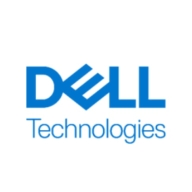


NetApp EF-Series All Flash Arrays and Dell PowerMax NVMe compete in the high-performance data storage category. Dell PowerMax NVMe often has the upper hand due to its advanced features and perceived value despite higher costs.
Features: NetApp EF-Series excels in simplicity with features like rapid deployment, straightforward storage management, and competitive pricing. Dell PowerMax NVMe offers innovative data services, built-in AI for performance optimization, and extensive scalability.
Room for Improvement: NetApp EF-Series needs improvements in data services, reporting capabilities, and scalability. Dell PowerMax NVMe users seek a streamlined setup process, reduced complexity, and enhanced documentation.
Ease of Deployment and Customer Service: NetApp EF-Series is known for its intuitive setup and responsive support. Dell PowerMax NVMe has comprehensive initial guidance but involves a more complex deployment process. Dell’s customer service is thorough and offers ongoing support.
Pricing and ROI: NetApp EF-Series stands out for its competitive setup costs and quick ROI due to reduced operational overhead. Dell PowerMax NVMe justifies higher upfront expenses with extensive functionalities and long-term performance benefits.



Pure Storage FlashArray//X is the world’s first enterprise-class, all-NVMe flash storage array. It represents a new class of storage – shared accelerated storage, which is a term coined by Gartner – that delivers major breakthroughs in performance, simplicity, and consolidation.
Dell PowerMax is the industry’s most secure mission-critical storage platform. With NVMe Dynamic Fabric technology, PowerMax breaks from traditional storage limitations, enabling seamless integration with cloud-native and legacy applications. Designed with a powerful scale-up and scale-out architecture, PowerMax supports mission-critical applications at scale with zero downtime and ultra-low latency. The latest PowerMaxOS 10 release harnesses AI-driven efficiencies for trusted performance, capacity, and security. By choosing PowerMax, you can trust in a secure, intelligent, and always modern storage solution that unlocks the full potential of your data to drive business success.
The NetApp EF560 all-flash array is an all-SSD storage system for applications that demand extremely high levels of performance and reliability. Requiring just 2U of rack space, the EF560 all-flash array combines extreme IOPS, microsecond response times, and up to 12GBps of bandwidth with leading, enterprise-proven availability features.
We monitor all All-Flash Storage reviews to prevent fraudulent reviews and keep review quality high. We do not post reviews by company employees or direct competitors. We validate each review for authenticity via cross-reference with LinkedIn, and personal follow-up with the reviewer when necessary.